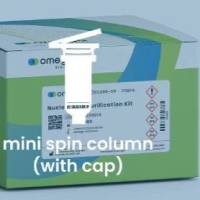Nordic Biological Specimen Bank Cohorts as Basis for Studies of Cancer Causes and Control: Quality Control Tools for Study Cohorts with More than Two
互联网
559
The Nordic countries have a long tradition of large-scale biobanking and comprehensive, population-based health data registries linkable on unique personal identifiers, enabling follow-up studies spanning many decades. Joint Nordic biobank-based studies provide unique opportunities for longitudinal molecular epidemiological research. The Nordic Biological Specimen Banks working group on Cancer Causes and Control (NBSBCCC) has worked out very precise quality assurance principles for handling of the samples , based on the tradition in biobank culture. The aim of this paper is to demonstrate how high standards of quality assurance can also be developed for the data related to the subjects and samples in the biobanks. Some of the practices adopted from the strong Nordic cohort study experience evidently improve quality of nested case-control studies nested in biobank cohorts. The data quality requirements for the standardised incidence ratio calculation offer a good way to check and improve accuracy of person identifiers and completeness of follow-up for vital status, which are crucial in case-control studies for picking up right controls for the cases. The nested case-control design applying incidence-density sampling is recommended as an optimal design for most biobank-based studies. It is demonstrated how some types of biobanks have a period immediately after sampling, when the cancer risk is not comparable with the cancer risk in the base population, and how many of the biobanks never represent the normal average population of the region. The estimates on the population-representativeness of the biobanks assist in interpretation of generalisability of results of the studies based on these samples, and the systematic tabulations of numbers of cancer cases will serve in study power estimations. The well over 130,000 prospective cancer cases registered among subjects in the NBSBCCC biobank cohorts have already offered unique possibilities for tens of strong studies, but for rare exposure-outcome combinations predictions on future numbers of cases improve the chance to select the right moment when the study will have accurate statistical power.









